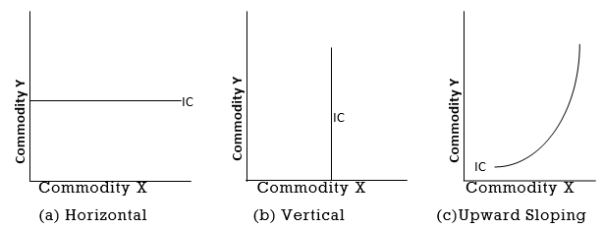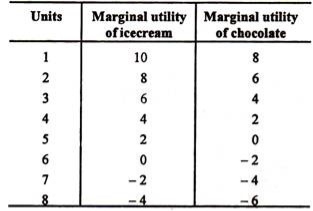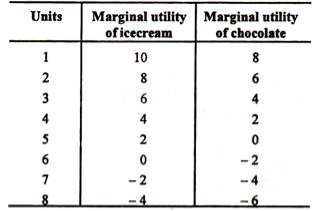Unit - 2
Consumer Behavior
Q1) What is the importance of Consumer behaviour?
A1) Importance of Consumer Behavior
It is very important to understand the behaviour of the customers to achieve the goal of the business. There is various importance of consumer behaviour; some of them are given below:
Production policies
The study of consumer behavior affects business production policies. Consumer behavior discovers, needs, knows, chooses consumers, and this discovery allows the company to plan and deploy products according to these specifications. Every company needs to be in constant contact with changing consumer behavior so that the necessary product changes are made on time.
Price Policy
Consumer behaviour is equally important in having price policy. The buyer only purchases your product, which is cheaper or has distinctive features than your competitor's.
Decision regarding the channel of distribution
An economical distribution channel should be imposed for goods and services which are sold solely based on low price. In the case of such products like T.V. sets, Air Conditioner, etc., must have different distribution channels. Thus, decision-related to the channel of distribution is taken based on consumer behavior.
Decision regarding sales promotion
Consumer behavior plays a vital role in deciding the sales promotion. It enables the producer to motivate and encourage the consumer to make a purchase decision, and the same is used in the promotional campaigns to awaken the desire to purchase the product.
Exploiting marketing opportunities
The study of consumer behaviour helps a marketer identify the needs, wants, desires and problems, etc. of the consumer. This information and knowledge help the marketer exploit market opportunities and meet the challenges in the market.
Q2) What do you mean by consumer behaviour?
A2) Consumer behavior is about the approach of how people buy and goods and services of use. Understanding consumer behavior will help business entities become more practical in selling, designing, developing products or services, and all other different initiatives that affect their customers.
Q3) What is Consumer Demand?
A3) Consumer demand is defined as the willingness and ability of consumers to purchase a quantity of goods and services in a given period of time, or at a given
Consumers consider various factors before making purchases.
For example, a particular brand, price range, size, features, etc. These factors differ from one individual to the other depending on their income level, standard of living, age, sex, customs, socio-economic backgrounds, tastes and preferences, etc. These factors form the basis for consumer buying behaviour.
Q4) Write the assumptions of consumer demand.
A4) The study and analysis of consumer behavior is based on three main assumptions, which are listed.
Let us read consumer demand assumptions in details:
1. Decisiveness
It is assumed that a consumer is supposed to be able to declare his own preference or indifference to two different commodities.
Consumers are therefore less ambiguous or confused when deciding between different commodities. This is known as consumer determination.
For example, an individual goes to a fast-food restaurant and is asked to opt between pizza and burger. According to the assumption of decisiveness, the individual would act in one of the following ways: opt for pizza, opt for burger, opt for none of the two and walk out.
2. Transitivity
In consumer demand, it is assumed that the preferences of an individual consumer are always consistent. An individual’s preference or indifference for one commodity over another can be applied to another related commodity. This is referred to as transitivity. In the above example, if the individual chooses pizza over burger, burger over pasta, then the individual would prefer pizza over pasta too as per the assumption of transitivity.
3. Non-satiation
It is assumed that a consumer is never completely satisfied. If a consumer prefers a commodity, he/she would continue to demand it. This is referred to as non-satiation.
For example, a larger pizza is preferred over a smaller pizza; two dresses are preferred over one; etc. However, non-satiation is not a fundamental assumption as rational consumers get satiated after a certain limit.
Q5) What do you mean by utility?
A5) Utility is the amount of satisfaction that results from the consumption of goods or services at any given time. Utility influences consumers on the choice of what to buy and how much to buy.
Q6) What are the types of utility?
A6) Types of Utility are:
This is the total amount of satisfaction that results from the total consumption of a particular product or service at any given time. Total profit increases at a declining rate as consumption increases. In other words, it is subject to the law of declining return. It decreases after an optimal point.
b. Marginal Utility
This is the additional utility obtained -from the consumption of one unit more than one given basic product per unit of time. It is the change in total profit that is carried out by the consumption of an additional unit of the goods at any given time. Marginal utility decreases as consumption increases. Hence the marginal utility curve tilts down from left to right.
Q7) Define Marshall’s law.
A7) The law of diminishing marginal utility is explained exhaustively by Alfred Marshall. According to its definition of the law of reduction of marginal utility, the following occurs: "During consumption, as more and more units of a product are used, each successive unit gives utility with a decreasing rate, provided that other things remain the same; although, the total utility increases.
Q8) State the law of equi-marginal utility.
A8) The law of equi-marginal utility explains the behaviour of a consumer when he consumers more than one commodity. Wants are unlimited but the income which is available to the consumers to satisfy all his wants is limited. This law explains how the consumer spends his limited income on various commodities to get maximum satisfaction. The law of equi-marginal utility is also known as the law of substitution or the law of maximum satisfaction or the principle of proportionality between prices and marginal utility.
If he finds that a rupee spent on one commodity gives him more utility than the same rupee spent on another commodity, he shall continue to spend money on the former till the utilities derived from the last rupee spent on the two commodities are equal.
Suppose chocolates and ice-creams are two purchasable goods. Suppose further that the consumer has Rs. 70 to spend. Let us spend Rs. 30 on ice-creams and Rs. 40 on chocolates. What is the result? The utility of the 3rd unit of ice-creams is 6 and that of the 4th unit of chocolates is 2. As the marginal utility of ice-cream is higher the consumer would buy more of ice-creams and less of chocolates.
Suppose he substitutes one ice-cream for one chocolate so that he buys four ice-creams and three chocolates. Now the marginal utility of both ice-creams and chocolates is the same, i.e., 4. This combination of ice-cream and chocolate yields maximum total utility of satisfaction.
The total utility of 4 ice-creams would be 10 + 8 + 6 + 4 = 28 and of three chocolates 8 + 6 + 4=18 which gives us a total utility of 46. The satisfaction given by 4 ice-creams and 3 chocolates at Rs. 10 each is greater than could be obtained by any other combination of the two goods. For no other combination does this utility amount to 46.
Q9) What are the limitations of the law?
A9) Limitations of the law
1. Indivisibility of goods
The theory is weakened by the fact that many commodities like a car, a house etc. are indivisible. In the case of indivisible goods, the law is not applicable.
2. The Marginal Utility of the goods are not constant
The theory is based on the assumption that the marginal utility of money is constant. But that is not really so.
3. The Measurement of Utility is not Possible.
Marshall states that the price a consumer is willing to pay for a commodity is equal to its marginal utility. But modern economists argue that, if two persons are paying an equal price for given commodity, it does not mean that both are getting the same level of utility. Thus, utility is a subjective concept, which cannot be measured, in quantitative terms.
4. Utilities are Interdependent
This law assumes that commodities are independent and therefore their marginal utilities are also independent. But in real life commodities are either substitutes or complements. Their utilities are therefore interdependent.
5. Indefinite Budget Period
According to Prof. K.E. Boulding, indefinite budget period is another difficulty in the law. Normally the budget period is assumed to be a year. But there are certain commodities which are available in several succeeding accounting periods. It is difficult to calculate marginal utility for such commodities.
Q10) What does Revealed theory approach mean? Explain with example.
A10) The revealed preference theory suggests that you simply can determine what consumers' preferences are by watching what they're buying during a range of circumstances, especially in several price and income scenarios. What we want is revealed by what we do, rather than what we say - actions speak louder than words - so the theory says.
When making a purchase, as consumers, we had considered a set of alternatives beforehand, revealed preference theory suggests. Therefore, given that we chose one option out of a set, whatever we chose has to be the preferred option.
Example of Revealed Preference
As an example of the relationships expounded upon in revealed preference theory, consider consumer Y that purchases a pound of grapes. It is assumed under revealed preference theory that consumer Y prefers that pound of grapes above all other items that cost the same, or are cheaper than, that pound of grapes. Since consumer Y prefers that pound of grapes over all other items they can afford, they will only purchase something other than that pound of grapes if the pound of grapes becomes unaffordable. If the pound of grapes becomes unaffordable, consumer Y will then move on to a less preferable substitute item.
Q11) The indifference curve must be convex to the origin at the consumer equilibrium point. True or false.
A11) That statement is true. At the point of consumer equilibrium, for the consumer equilibrium to be stable, the marginal substitution rate of goods must be reduced. This means that the indiscriminate curve must be convex at the origin at the equilibrium point. If at this point the indiscriminate curve is concave with respect to the origin, the marginal utility is still increasing
Q12) Explain Law of demand. Mention its exceptions.
A12) Now the law of demand states that as the price of a product increases, all conditions become equal, the demand for that product decreases. Therefore, as the price of a product decreases, the demand for it increases. For example, if the price is Rs, consumers can buy Twenty of the bananas.50.
But if the price rises to Rs.70, then the same consumer can limit the purchase to a dozen. Therefore, the demand for bananas, in this case, decreased by a dozen.
Thus, the law of demand defines the inverse relationship between the price factor of the product and the quantity factor.
Exceptions to the law of demand
It should be noted that the law of demand is true in most cases. Prices continue to fluctuate until an equilibrium is created. there are certain exceptions to the law of demand. These include Giffen goods, Veblen goods, possible price changes, and essential goods. Let's discuss these exceptions in more detail.Giffen goods
Giffen Collectibles is a concept introduced by Sir Robert Giffen. These products are inferior to luxury goods. However, a unique feature of Giffen products is that demand also increases as its price increases. this the only feature which makes this exception for law.
The Irish Potato Famine is a classic example of the concept of Giffen merchandise. Potatoes are a staple of the Irish diet. Potatoes during the Famine, when the price of potatoes rose, people did not spend too much on high-end foods such as meat and ate more potatoes to stick to their diet, so did the demand as the price of potatoes rose, but this is a complete reversal of the law of demand.
Q13) Explain the nature of the indifference curve.
A13) Downward inclination: the indifference curve tilts downwards from left to right.
This means that when the amount of one good in a combination increases, the amount of another must necessarily be reduced so that the total satisfaction is constant.
If the indifference curve is a horizontal straight line (parallel to the X-axis),
then the indifference curve is a horizontal straight line (parallel to the X-axis),
as shown in the figure. 2.4 (a) means that as the amount of good X increases,
the amount of good Y will remain constant, but the consumer will remain in different among the various combinations. This cannot be done, because consumers always prefer a large amount of good to a small amount of its good. Similarly, the indifference curve cannot be a vertical straight line

A vertical straight line means that while the amount of good y in combination increases the amount of good X remains constant. The third possibility for the curve is to lean upward to the right.
Q14) Please explain why you "agree" or "disagree" with the following statement: There is no omission to the law of demand.
A14) This statement is false. Exceptions to the law of demand are:
- Changes in prices of related products
- Tastes and preferences of consumers
- Consumer income
- Technology changes
- Changes in the tax system
- Changes in consumer price expectations.
Q15) The figure shows the demand for shoes. Give one factor that causes the movement from B to A?

A15) The demand curve DD in the figure represents the inverse relationship between demand and price. Therefore, price is the determining variable of demand. Thus, the increase in the price of shoes shifts the required amount from A to B.
Unit - 2
Consumer Behavior
Q1) What is the importance of Consumer behaviour?
A1) Importance of Consumer Behavior
It is very important to understand the behaviour of the customers to achieve the goal of the business. There is various importance of consumer behaviour; some of them are given below:
Production policies
The study of consumer behavior affects business production policies. Consumer behavior discovers, needs, knows, chooses consumers, and this discovery allows the company to plan and deploy products according to these specifications. Every company needs to be in constant contact with changing consumer behavior so that the necessary product changes are made on time.
Price Policy
Consumer behaviour is equally important in having price policy. The buyer only purchases your product, which is cheaper or has distinctive features than your competitor's.
Decision regarding the channel of distribution
An economical distribution channel should be imposed for goods and services which are sold solely based on low price. In the case of such products like T.V. sets, Air Conditioner, etc., must have different distribution channels. Thus, decision-related to the channel of distribution is taken based on consumer behavior.
Decision regarding sales promotion
Consumer behavior plays a vital role in deciding the sales promotion. It enables the producer to motivate and encourage the consumer to make a purchase decision, and the same is used in the promotional campaigns to awaken the desire to purchase the product.
Exploiting marketing opportunities
The study of consumer behaviour helps a marketer identify the needs, wants, desires and problems, etc. of the consumer. This information and knowledge help the marketer exploit market opportunities and meet the challenges in the market.
Q2) What do you mean by consumer behaviour?
A2) Consumer behavior is about the approach of how people buy and goods and services of use. Understanding consumer behavior will help business entities become more practical in selling, designing, developing products or services, and all other different initiatives that affect their customers.
Q3) What is Consumer Demand?
A3) Consumer demand is defined as the willingness and ability of consumers to purchase a quantity of goods and services in a given period of time, or at a given
Consumers consider various factors before making purchases.
For example, a particular brand, price range, size, features, etc. These factors differ from one individual to the other depending on their income level, standard of living, age, sex, customs, socio-economic backgrounds, tastes and preferences, etc. These factors form the basis for consumer buying behaviour.
Q4) Write the assumptions of consumer demand.
A4) The study and analysis of consumer behavior is based on three main assumptions, which are listed.
Let us read consumer demand assumptions in details:
1. Decisiveness
It is assumed that a consumer is supposed to be able to declare his own preference or indifference to two different commodities.
Consumers are therefore less ambiguous or confused when deciding between different commodities. This is known as consumer determination.
For example, an individual goes to a fast-food restaurant and is asked to opt between pizza and burger. According to the assumption of decisiveness, the individual would act in one of the following ways: opt for pizza, opt for burger, opt for none of the two and walk out.
2. Transitivity
In consumer demand, it is assumed that the preferences of an individual consumer are always consistent. An individual’s preference or indifference for one commodity over another can be applied to another related commodity. This is referred to as transitivity. In the above example, if the individual chooses pizza over burger, burger over pasta, then the individual would prefer pizza over pasta too as per the assumption of transitivity.
3. Non-satiation
It is assumed that a consumer is never completely satisfied. If a consumer prefers a commodity, he/she would continue to demand it. This is referred to as non-satiation.
For example, a larger pizza is preferred over a smaller pizza; two dresses are preferred over one; etc. However, non-satiation is not a fundamental assumption as rational consumers get satiated after a certain limit.
Q5) What do you mean by utility?
A5) Utility is the amount of satisfaction that results from the consumption of goods or services at any given time. Utility influences consumers on the choice of what to buy and how much to buy.
Q6) What are the types of utility?
A6) Types of Utility are:
This is the total amount of satisfaction that results from the total consumption of a particular product or service at any given time. Total profit increases at a declining rate as consumption increases. In other words, it is subject to the law of declining return. It decreases after an optimal point.
b. Marginal Utility
This is the additional utility obtained -from the consumption of one unit more than one given basic product per unit of time. It is the change in total profit that is carried out by the consumption of an additional unit of the goods at any given time. Marginal utility decreases as consumption increases. Hence the marginal utility curve tilts down from left to right.
Q7) Define Marshall’s law.
A7) The law of diminishing marginal utility is explained exhaustively by Alfred Marshall. According to its definition of the law of reduction of marginal utility, the following occurs: "During consumption, as more and more units of a product are used, each successive unit gives utility with a decreasing rate, provided that other things remain the same; although, the total utility increases.
Q8) State the law of equi-marginal utility.
A8) The law of equi-marginal utility explains the behaviour of a consumer when he consumers more than one commodity. Wants are unlimited but the income which is available to the consumers to satisfy all his wants is limited. This law explains how the consumer spends his limited income on various commodities to get maximum satisfaction. The law of equi-marginal utility is also known as the law of substitution or the law of maximum satisfaction or the principle of proportionality between prices and marginal utility.
If he finds that a rupee spent on one commodity gives him more utility than the same rupee spent on another commodity, he shall continue to spend money on the former till the utilities derived from the last rupee spent on the two commodities are equal.
Suppose chocolates and ice-creams are two purchasable goods. Suppose further that the consumer has Rs. 70 to spend. Let us spend Rs. 30 on ice-creams and Rs. 40 on chocolates. What is the result? The utility of the 3rd unit of ice-creams is 6 and that of the 4th unit of chocolates is 2. As the marginal utility of ice-cream is higher the consumer would buy more of ice-creams and less of chocolates.
Suppose he substitutes one ice-cream for one chocolate so that he buys four ice-creams and three chocolates. Now the marginal utility of both ice-creams and chocolates is the same, i.e., 4. This combination of ice-cream and chocolate yields maximum total utility of satisfaction.
The total utility of 4 ice-creams would be 10 + 8 + 6 + 4 = 28 and of three chocolates 8 + 6 + 4=18 which gives us a total utility of 46. The satisfaction given by 4 ice-creams and 3 chocolates at Rs. 10 each is greater than could be obtained by any other combination of the two goods. For no other combination does this utility amount to 46.
Q9) What are the limitations of the law?
A9) Limitations of the law
1. Indivisibility of goods
The theory is weakened by the fact that many commodities like a car, a house etc. are indivisible. In the case of indivisible goods, the law is not applicable.
2. The Marginal Utility of the goods are not constant
The theory is based on the assumption that the marginal utility of money is constant. But that is not really so.
3. The Measurement of Utility is not Possible.
Marshall states that the price a consumer is willing to pay for a commodity is equal to its marginal utility. But modern economists argue that, if two persons are paying an equal price for given commodity, it does not mean that both are getting the same level of utility. Thus, utility is a subjective concept, which cannot be measured, in quantitative terms.
4. Utilities are Interdependent
This law assumes that commodities are independent and therefore their marginal utilities are also independent. But in real life commodities are either substitutes or complements. Their utilities are therefore interdependent.
5. Indefinite Budget Period
According to Prof. K.E. Boulding, indefinite budget period is another difficulty in the law. Normally the budget period is assumed to be a year. But there are certain commodities which are available in several succeeding accounting periods. It is difficult to calculate marginal utility for such commodities.
Q10) What does Revealed theory approach mean? Explain with example.
A10) The revealed preference theory suggests that you simply can determine what consumers' preferences are by watching what they're buying during a range of circumstances, especially in several price and income scenarios. What we want is revealed by what we do, rather than what we say - actions speak louder than words - so the theory says.
When making a purchase, as consumers, we had considered a set of alternatives beforehand, revealed preference theory suggests. Therefore, given that we chose one option out of a set, whatever we chose has to be the preferred option.
Example of Revealed Preference
As an example of the relationships expounded upon in revealed preference theory, consider consumer Y that purchases a pound of grapes. It is assumed under revealed preference theory that consumer Y prefers that pound of grapes above all other items that cost the same, or are cheaper than, that pound of grapes. Since consumer Y prefers that pound of grapes over all other items they can afford, they will only purchase something other than that pound of grapes if the pound of grapes becomes unaffordable. If the pound of grapes becomes unaffordable, consumer Y will then move on to a less preferable substitute item.
Q11) The indifference curve must be convex to the origin at the consumer equilibrium point. True or false.
A11) That statement is true. At the point of consumer equilibrium, for the consumer equilibrium to be stable, the marginal substitution rate of goods must be reduced. This means that the indiscriminate curve must be convex at the origin at the equilibrium point. If at this point the indiscriminate curve is concave with respect to the origin, the marginal utility is still increasing
Q12) Explain Law of demand. Mention its exceptions.
A12) Now the law of demand states that as the price of a product increases, all conditions become equal, the demand for that product decreases. Therefore, as the price of a product decreases, the demand for it increases. For example, if the price is Rs, consumers can buy Twenty of the bananas.50.
But if the price rises to Rs.70, then the same consumer can limit the purchase to a dozen. Therefore, the demand for bananas, in this case, decreased by a dozen.
Thus, the law of demand defines the inverse relationship between the price factor of the product and the quantity factor.
Exceptions to the law of demand
It should be noted that the law of demand is true in most cases. Prices continue to fluctuate until an equilibrium is created. there are certain exceptions to the law of demand. These include Giffen goods, Veblen goods, possible price changes, and essential goods. Let's discuss these exceptions in more detail.Giffen goods
Giffen Collectibles is a concept introduced by Sir Robert Giffen. These products are inferior to luxury goods. However, a unique feature of Giffen products is that demand also increases as its price increases. this the only feature which makes this exception for law.
The Irish Potato Famine is a classic example of the concept of Giffen merchandise. Potatoes are a staple of the Irish diet. Potatoes during the Famine, when the price of potatoes rose, people did not spend too much on high-end foods such as meat and ate more potatoes to stick to their diet, so did the demand as the price of potatoes rose, but this is a complete reversal of the law of demand.
Q13) Explain the nature of the indifference curve.
A13) Downward inclination: the indifference curve tilts downwards from left to right.
This means that when the amount of one good in a combination increases, the amount of another must necessarily be reduced so that the total satisfaction is constant.
If the indifference curve is a horizontal straight line (parallel to the X-axis),
then the indifference curve is a horizontal straight line (parallel to the X-axis),
as shown in the figure. 2.4 (a) means that as the amount of good X increases,
the amount of good Y will remain constant, but the consumer will remain in different among the various combinations. This cannot be done, because consumers always prefer a large amount of good to a small amount of its good. Similarly, the indifference curve cannot be a vertical straight line

A vertical straight line means that while the amount of good y in combination increases the amount of good X remains constant. The third possibility for the curve is to lean upward to the right.
Q14) Please explain why you "agree" or "disagree" with the following statement: There is no omission to the law of demand.
A14) This statement is false. Exceptions to the law of demand are:
- Changes in prices of related products
- Tastes and preferences of consumers
- Consumer income
- Technology changes
- Changes in the tax system
- Changes in consumer price expectations.
Q15) The figure shows the demand for shoes. Give one factor that causes the movement from B to A?

A15) The demand curve DD in the figure represents the inverse relationship between demand and price. Therefore, price is the determining variable of demand. Thus, the increase in the price of shoes shifts the required amount from A to B.

